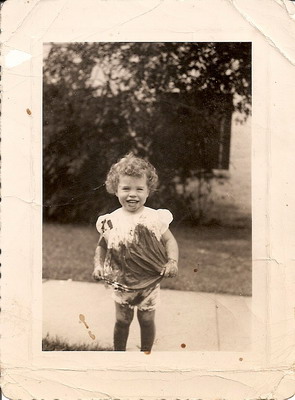INTEREST AREA: EXPERIENTIAL FOCUSING THERAPY
INTEREST AREAS: SEVEN DIFFERENT PLACES TO START LISTENING/FOCUSING PRACTICE GROUPS!!!
The Interest Areas under “Is This You” at The Creative Edge Focusing website (www.cefocusing.com ) give the First Ten Steps you might take to bring the model of Listening/Focusing into seven whole different areas of living: Organizations, Support Groups and Communities, Relationships, Parenting, Education, Spiritual Communities, and Helping Professions (psychotherapy, counselling, medicine, body work, etc.).
In the e-newsletters, I am introducing you to each of these Interest Areas and possible First Steps so that you might start a Listening/Focusing practice group in any of these areas. See BLOGS BELOW THIS ONE IN ARCHIVES FOR JUNE, 2008:
Week One Interest Area: Creative Edge Organizations,
Week Two Interest Area: The Way of Relationship,
Week Three Interest Area: Building Community — Support Groups Everywhere,
Week Four Interest Area: Creative Edge Education —Every Gift Awakened (Especially for ADHD) .
INTEREST AREA: EXPERIENTIAL FOCUSING THERAPY (FOT)
Experiential (EXP) Focusing Therapy is Dr. McGuire’s version of Gendlin’s Focusing-Oriented Therapy (Gendlin, E.T. Focusing-Oriented Therapy: A Manual of the Experiential Method, Guilford, 1996).The core skills of Experiential Focusing Therapy, Intuitive Focusing and Focused Listening,integrate into all other approaches to counseling and therapy, including body-centered work, spiritual direction, and medical interviews as well as psychotherapy.
The counselor keeps his/her attention upon the client/patient’s Creative Edge, the “intuitive feel” from which new solutions and creative ideas can arise. S/he also pays attention to the Relational Edge (term created by Glenn Fleisch), her own experience of the interactional “intuitive feel” created between herself and the client.
The counselor uses Focused Listening, including Focusing Invitations, to encourage Intuitive Focusing by the client. However, the counselor can also incorporate all other techniques which might enable the client/patient to step out of fixed, static patterns. This can include body work, Gestalt and other experiential interventions, psychoanalytic and Self Psychology, interpretations of the therapeutic relationship, cognitive/behavioral analysis, Emotion-Focused Therapy, whatever the counselor has in his or her tool bag.
But the goal of interventions is always the same: allowing the client/patient to experience and pay attention to the “intuitive feel” underlying “stuck” patterns, the Creative Edge of change, and to articulate Paradigm Shifts out of this fresh, felt experiencing, using the PRISMS/S Problem Solving Method.
The following articles indicate Dr. McGuire’s specific emphases (you can find them all at www.cefocusing.com under Free Resources: Articles, http://cefocusing.com/freedownloads/index.php:
Affect in Focusing and Experiential Therapy (PDF)
Focusing Inner Child work With Abused Clients (PDF)
Caring Confrontation In Experiential Therapy (PDF)
The “sheen of tears”(“Being Touched and Being Moved” (PDF) as an indicator of areas of profound personal meaning as well as of possible unresolved childhood issues
Experiential Focusing as a method of brief therapy (PDF) and brief therapy from a humanistic standpoint (PDF)
Psychotherapy training through peer counseling (PDF)
Integrating Listening/Focusing moments into medical interviews (PDF), throughout hospitals, and other helping/counseling situations
For a short description of Experiential Focusing Therapy, see PDF download Experiential Focusing Therapy
See also:
Experiential Focusing Therapy: For Clients
Experiential Focusing Therapy: For Therapists
All Helping Professionals Can “Experientialize” Their Work
Helping professionals include all whose work focus is on helping other human beings, rather than creating solely material or intellectual products. Helping professionals include dentists, physicians, psychologists, social workers, counselors, teachers, nurses, medical technicians, chiropractors, acupuncturists, holistic health practitioners, massage therapists, etc.
Helping professionals can integrate the basic Focused Listening and Intuitive Focusing skills into their work in many ways. They can use them to aid patients and clients, for their own personal growth, and for burnout prevention, an important area for all helping professionals. See More on Focusing and Helping Professionals.
Purchase Dr. McGuire’s manaul, The Experiential Dimension In Therapy.
Ten First Steps To Take To Add Focusing and Listening To Healing
Go to Interest Area: Experiential Focusing Therapy and scroll to the bottom to find the Ten First Steps To Take to bring Focusing into therapy practice and other helping professions.
Tell me what you think at cefocusing@gmail.com or comment on this blog below !
Click here to subscribe to our Instant “Ahah!” e-newsletter and get the latest exercises first!!!
See Core Concept: Conflict Resolution to find a complete mini-course on Interpersonal Focusing and Conflict Resolution, including Rosenberg’s Non-Violent Communication, Blanchard’s “One Minute Apology,” Patricia Evan’s books on Verbally Abuse and Controlling Relationships, McMahon’s Beyond The Myth Of Dominance, and much more.
See Core Concept: Intimate Relationship to find a complete mini-course on increasing intimacy and sexuality, including the “Sharing Your Day” exercise, Listening/Focusing Partnerships for The Way of Relationship, untangling and equalizing desire, tantric sexuality, and much more.
Download complete Instant “Ahah!” Mini-Manual, in English and Spanish, from CEF Website
Find links to free articles, personality tests, multi-media Self-Help training, Classes and workshops
Dr. Kathy McGuire, Director
